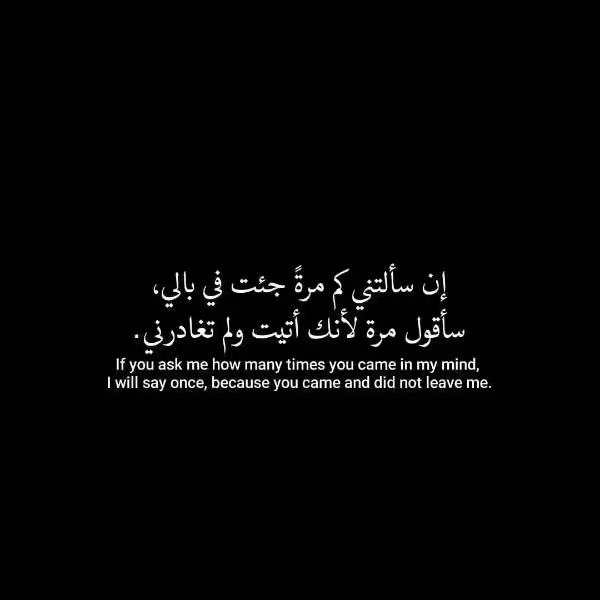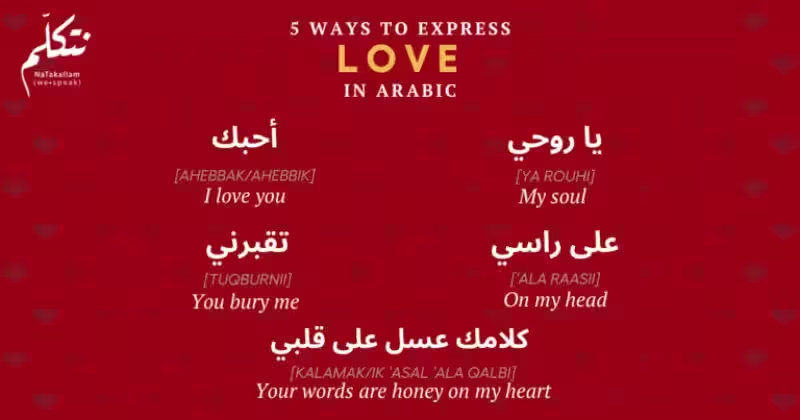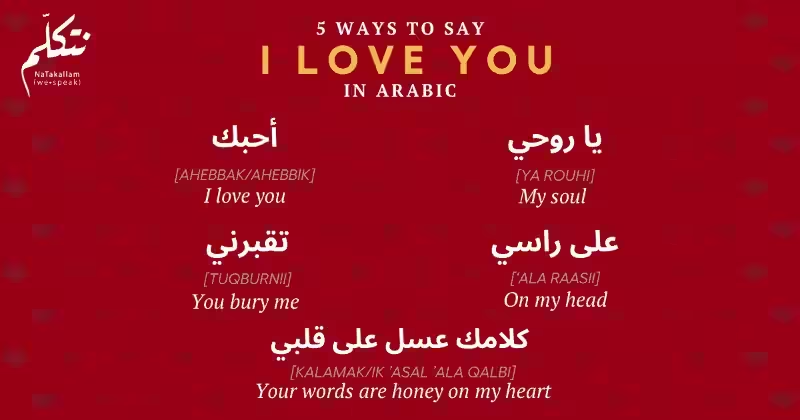
Arabic, a language rich in poetic expression, boasts a treasure trove of words of endearment that go far beyond the familiar “Habibi.” This article delves into the nuanced world of these terms, exploring their meanings, usage, and cultural significance. Understanding these expressions can unlock a deeper appreciation for the Arabic language and the emotional tapestry it weaves.
Unveiling the Nuances of Affection
Arabic, like many languages, doesn’t have a single, universally applicable word for “sweetheart.” Instead, it offers a spectrum of terms, each carrying a unique shade of affection. This variety reflects the cultural richness and sensitivity of expressing love and care. These expressions range from everyday interactions to passionate declarations, adapting to the context and relationship. The choice of words reflects not only the speaker’s feelings but also their relationship with the recipient.
Exploring a Lexicon of Love: Beyond “Habibi”
The term “Habibi” (حبيبي) and its feminine counterpart “Habibti” (حبيبتي), meaning “my darling” or “my beloved,” are undeniably common, but far from exhaustive. Arabic offers a vast palette of expressions, each with its own unique flavor. Recognizing these subtleties allows us to appreciate the depth of emotional expression embedded within the language. The flexibility of Arabic allows these words to be adapted, with regional variations in pronunciation enhancing the local flavor.
A Deep Dive into Common Terms
Common Terms of Endearment:
- Habibi/Habibti (حبيبي/حبيبتي): A classic and widely used term, conveying affection and endearment, suitable for close relationships.
- Hobbi (حبي): This word, stemming from “love,” is frequently used in music and poetry, often expressing deep romantic affection.
- Habib/Habibat al-qalbi (حبيب/حبيبة قلبي): A more poetic variation of “Habibi/Habibti,” meaning “Beloved of my heart,” highlighting the profound connection between two people. The pronunciation of the “qaf” (ق) varies based on the dialect.
- Ya Qalbi (يا قلبي): “My heart,” a deeply emotional and intimate term, often used in passionate expressions.
- Hayati (حياتي): “My life,” conveying the utmost importance and love for the recipient.
- Ya RuHi (يا روحي): “My soul,” a powerful expression of deep, spiritual connection.
- Ya ‘Omri (يا عمري): “My lifetime,” an intense expression of devotion and lasting love, emphasizing the preciousness of the relationship.
- ʿayuni/ʿeyuni (عيوني): “My eyes,” a poetic expression highlighting the importance of the eyes as a window to the soul, often used romantically. The difference in pronunciation (ʿayuni versus ʿeyuni) is another example of regional variations.
Regional and Dialectical Variations
A critical aspect of Arabic terms of endearment is their regional adaptation. The pronunciation of certain letters, like the “qaf,” varies significantly from region to region. Dialects also introduce unique terms, enriching the linguistic diversity. For instance, “Ya Sanadi” (يا سندي), meaning “My backbone,” is specific to certain Lebanese dialects, highlighting the importance of the relationship.
Beyond Romance: Family and Friends
These terms aren’t limited to romantic relationships. “Habibi” is used for beloved family members and even close friends, showcasing the versatility of the language. The context and relationship between the speakers are crucial for understanding the intended meaning of the term.
Exploring the Poetic Heart of Arabic Affection
Many terms of endearment in Arabic evoke a powerful imagery, drawing on poetic traditions. “Ya Qamar” (يا قمر), “moon”, is a poetic expression evoking beauty and romance. Similarly, terms like “Ya ‘Assal” (يا عسل), “honey,” and “Helwa/Helo” (يا حلو/حلوى), “sweet one,” reflect the cultural emphasis on sweetness and affection.
Formal Expressions and Context
For formal settings, terms like “ʿazizi/ʿazizati” (عزيزي/عزيزتي), “my treasure,” are used, demonstrating the language’s ability to adapt to varying levels of formality. This adaptability underscores the importance of context when interpreting these terms.
Combining Terms for Deeper Meaning
Arabic allows for a rich interplay of expressing affection. Combining terms creates even more evocative expressions, capturing more nuanced emotions, such as “ruh albi” (soul of my heart) or “habib albi” (beloved of my heart). These combinations highlight the profound and deep-rooted nature of the relationship.
Embracing the Cultural Significance
The use of these words of endearment is deeply rooted in Arabic culture. They are not mere expressions; they are a reflection of the values, traditions, and emotional connections that shape society. Understanding these nuances allows for a richer cultural exchange and appreciation.
A Call to Exploration
The exploration of Arabic terms of endearment is a journey into a rich linguistic and cultural heritage. Learning these expressions, beyond the basic “Habibi,” opens a door to a deeper understanding of the nuances of language and the diverse ways in which humans express love and affection. The effort involved in learning these expressions can enrich your understanding of Arabic culture and strengthen your connection with the language and its speakers. Learning the language through resources like NaTakallam can further enhance this experience and provides an excellent opportunity to practice using these words.
Frequently Asked Questions about Words of Endearment in Arabic
Q1: What are some common words of endearment in Arabic?
A1: The most common and widely used term is “Habibi” (حبيبي) for a male and “Habibti” (حبيبتي) for a female, meaning “my darling” or “my beloved.” Other frequently used terms include “Hobbi” (حبي), meaning “my love,” and variations like “Habib/Habibat al-qalbi” (حبيب/حبيبة قلبي), meaning “Beloved of my heart.” These terms are versatile and can be used in various relationships, from romantic to familial. However, the best word to use depends on the context and relationship.
Q2: How do I use the prefix “ya” (يا)?
A2: The prefix “ya” (يا) is a vocative particle, similar to the less-used “O” in English. It’s used before a term of endearment to convey intimacy and direct address. For example, “ya habibi” (يا حبيبي), meaning “my darling.” This demonstrates the intimate nature of the language.
Q3: Are there regional variations in pronunciation and usage?
A3: Yes, there are regional variations in pronunciation, especially regarding the articulation of certain consonants like the “qaf” (ق). Furthermore, some terms of endearment might be more common in specific dialects or regions. For instance, “ya sanadi” (يا سندي), meaning “my backbone,” is specific to certain Lebanese dialects.
Q4: What is the significance of the heart in Arabic terms of endearment?
A4: The heart (“qalbi” – قلبي) plays a significant role in expressing love. Terms like “ya qalbi” (يا قلبي), meaning “my heart,” and “ya fo’aadi” (يا فؤادي), meaning “my heart”, highlight the emotional depth behind the expressions. The “heart” is a recurring symbol of affection and love.
Q5: How do different words of endearment convey varying levels of intensity?
A5: Some terms, like “Hayati” (حياتي), meaning “my life,” express a stronger intensity of love than others. The choice of a word reflects the depth and nature of the relationship. For example, “Habibi” is a general term of endearment, while “Hayati” suggests a deeper, more profound connection.
Q6: Are there terms for expressing admiration or affection besides romantic love?
A6: Yes, terms like “Ya Jamil” (يا جميل), meaning “beautiful one,” are used to express admiration or affection in non-romantic contexts, such as admiring a friend’s qualities or complimenting a family member.
Q7: Can terms of endearment be used sarcastically?
A7: While most of these words are used to express affection, they can sometimes be used ironically or sarcastically, depending on the context and the speaker’s intention. This adds another layer of nuance to the language.
Q8: How do I express “I love you” in Arabic?
A8: “Ana bahebak” (أنا بحبك) is a common and direct way to express “I love you.”
Q9: What are some sweeter terms of endearment in Arabic?
A9: Terms like “ya Helo/Helwa” (يا حلو/ حلوى), meaning “sweet one,” and “ya ‘asal” (يا عسل), meaning “honey,” reflect the cultural emphasis on sweetness and affection commonly used in many cultures.
Q10: What is the difference between a term of endearment and a word expressing love?
A10: Terms of endearment are used to show affection, while words like “Hob” (حب), meaning “love,” express the emotion itself. There is a subtle distinction between showing fondness and expressing the concept of love.








